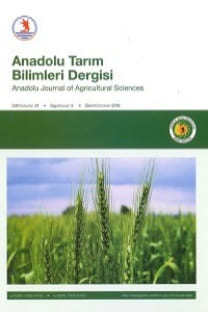APPLICATION OF GIS MODEL IN PHYSICAL LAND EVALUATION SUITABILITY FOR RICE CULTIVATION
Öz The objective of this study was to establish spatial model in land evaluation for rice cultivation using GIS in Bafra Plain found in the Kızılırmak Delta and located in the central Black Sea region of Turkey. The study area covers about 4823.7 ha. A land unit resulted from the overlay process of the selected theme layers has unique information of land qualities for which the suitability is based on. The selected theme layers of rice include topographic factor (slope), soil physical factors (soil depth, soil texture, drainage, stoniness, hydraulic conductivity) and soil chemical factors (pH, electrical conductivity, CaCO3 and soil fertility). These theme layers were collected from existing information. Spatial information of soil physical and soil chemical factors were formulated using soil map database. Slope layer of the study area was prepared from DEM. Each land characteristics is also considered as a thematic layer in the GIS. In addition, each of land quality layers with associated attribute data is digitally encoded in a GIS database. After combination of these layers, a resultant map was produced. Land suitability rating model applied to the resultant polygonal layer provided the suitability classes for field crops. Results showed that 79% of the study area is highly and moderately suitable for field crops, whereas 21% of the study area is low and non suitable for rice cultivation due to soil and land conditions. The resultant suitability classes were also checked with field experiment study. 12 rice species were used in experiments. ANOVA was done for grain yield and LSD0.05 test was implemented for comparison of mean values in the TARIST statistics package. According to ANOVA results, it was found significantly positive relationship between land suitability classes and grain yield values. The grain yield values were affected at level of P
